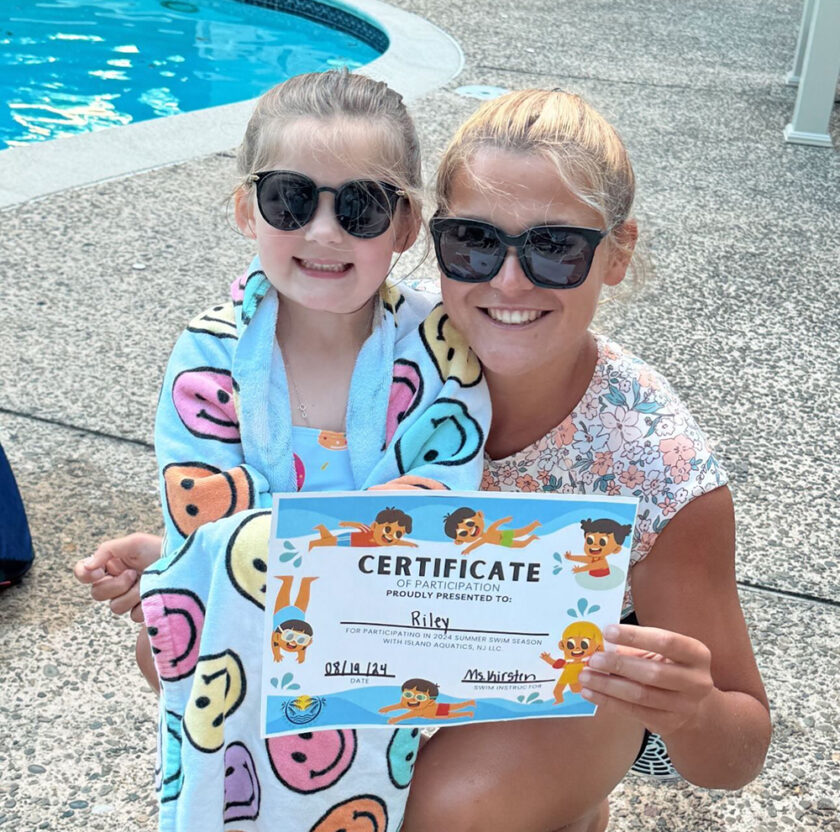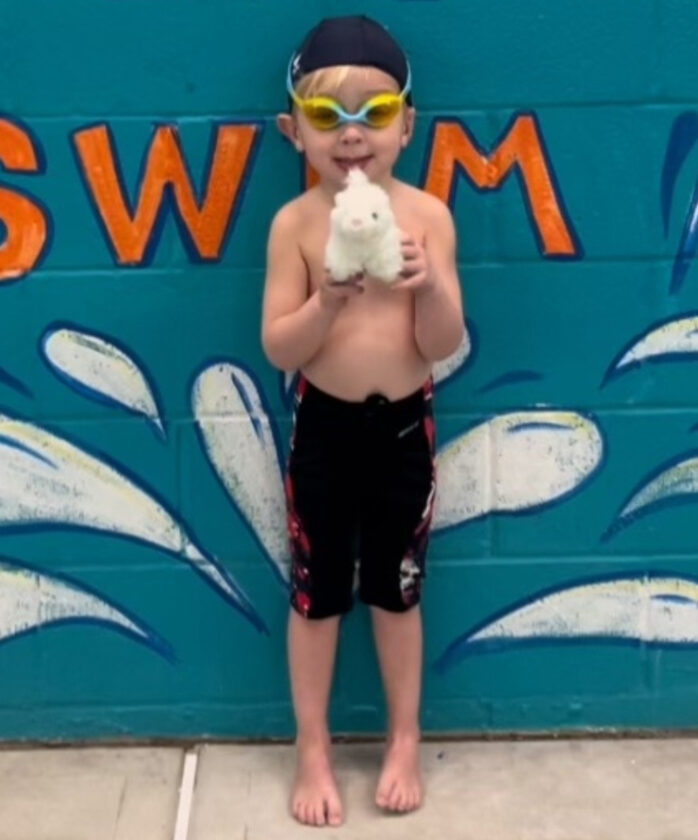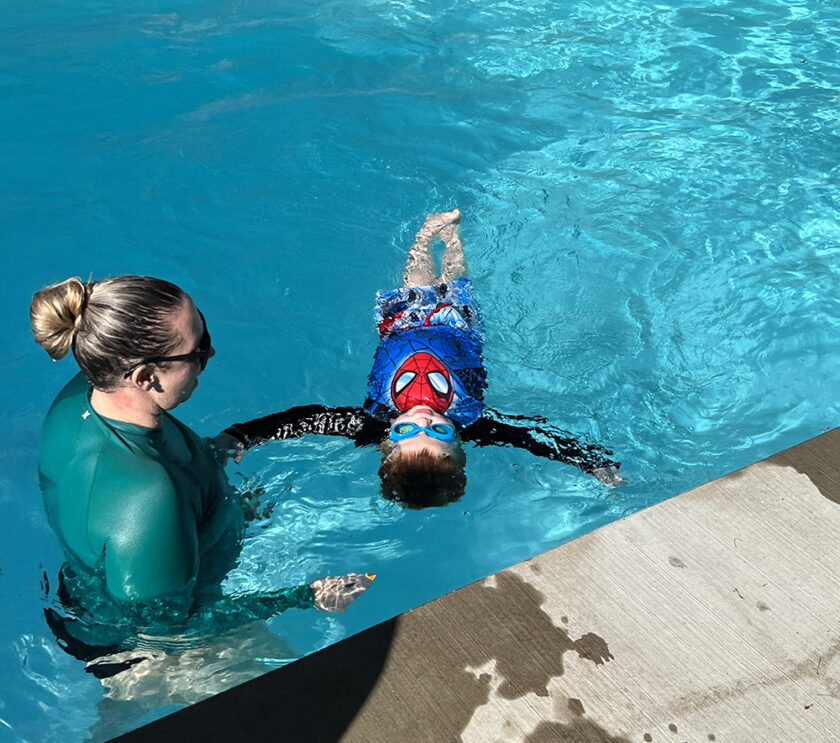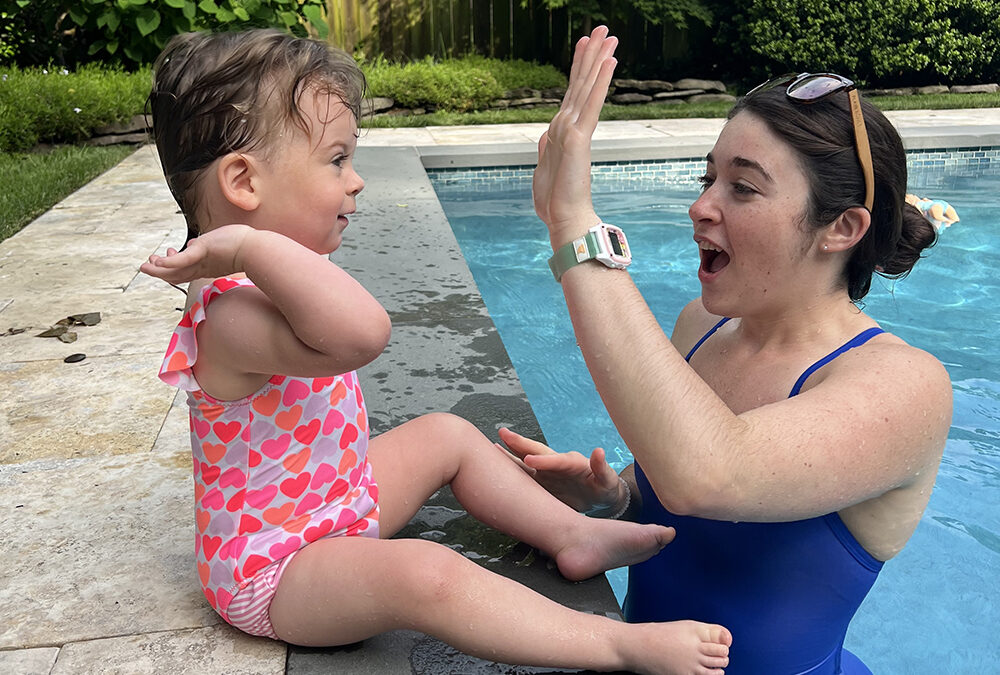Family Tides with Madison Russ
With summer around the corner, many families are gearing up for sun-filled days at the beach and pool. Swim safety might not be the first thing on their minds, but it should be.
Drowning is the leading cause of death for children ages 1 to 4, according to the American Red Cross. It’s also the leading cause of death for children and adults with autism and the second leading cause of unintentional injury death for children ages 5 to 14.
Though it’s never too late to start swimming lessons, and even older children can benefit, most experts agree: the earlier, the better.
“I always say swimming should be the first sport a child should learn, not because it’s just a sport, but because it’s a lifesaving skill,” said Alicia Fimple-Paccione, owner of Island Aquatics NJ, which offers mobile swim lessons in Atlantic and Cape May counties. “Especially down here, we’re surrounded by water. You never know what could happen.”

Fimple-Paccione said children are typically ready to get in the pool around 6 months old, but she always encourages parents to consult their pediatrician first.
Patrick Bell, swim department leader at Bright Stars Academy in Egg Harbor Township, which offers indoor swim lessons year-round, said students range in age from 4 months to 14 years old. For the youngest swimmers, their classes include caregiver participation and focus on foundational skills, like kicking or blowing bubbles in the water.
“Everybody wants to enjoy the water, especially with us being in a shore community,” said Bell. “Swimming has its obvious set of dangers. So, our first responsibility, our first goal, is to get these kids safe in the water.”
Though it may take some time for young children to swim independently, Bell said the skills they learn can be lifesaving.
“The first thing we teach these kids is strategies to keep themselves floating or to find a way to get somewhere they’re safe,” said Bell.

That preparation paid off for one of Bell’s students who, at just over 3 years old, fell into a pool during a family barbecue.
“Once he fell in, he turned around, stayed calm, grabbed onto the wall like we practiced in our lessons, then moved his hands and kind of crawled all the way over to a ladder and climbed out of the pool. Obviously, this kid was going to be safe because his parents were on their way over to jump in and rescue him, but he did it on his own,” he said.
Fimple-Paccione shared a similar story about a 2-year-old student who fell into the deep end of the family pool but was able to float on her back and make her way to safety.
“When we watch movies or watch TV, and you see somebody drowning, it is a loud, activated scene. Whereas, unfortunately, in real life, it’s silent,” she said.
Of course, not every child is eager to jump in right away. Both Bell and Fimple-Paccione noted that tears and nerves are often normal, especially in the first few lessons.
“We’re never forceful with getting them in the water. We try to encourage them. We have the parents watching in the lobby and cheering them on,” said Bell, explaining that they reward children every time they improve or gain a skill with gold coins and ribbons. “What’s good is that the kids who are a little more afraid see the others getting excited and want to get in on it.”
Bell noted every child learns differently and at their own pace. But a consistent, positive environment makes a difference.

“Everyone will agree if you have a routine, and the kid really bonds with the instructor, and they have that consistency, their skills are going to keep increasing at an even higher rate than someone who starts and stops,” he said. “Are we teaching the kids a lot of important skills? Of course. But we also want it to be fun. That’s how you build students who want to stay with the program.”
Fimple-Paccione echoed that swim lessons are not just a “summer activity” but should be continued throughout the year, especially as children grow.
And just because a child is learning to swim or developing safety skills doesn’t automatically make them immune to risk.
Fimple-Paccione noted that parents should remain within arm’s reach, warning that even in life vests or puddle jumpers, children’s arms can slip out, or the device can become unbuckled.
She also recommends dressing children in brightly colored swimsuits, like neon pink, orange, yellow or green, which are easier to spot in the water.
“A saying I like to use is, ‘Think bright, stay in sight.’ The brighter the suit, the more visible it is at the bottom of a pool, or in a lake or the ocean,” she said.
It’s also critical to have eyes on swimmers at all times.
“Even if you’re swimming in an area where it’s somebody’s backyard pool for a barbecue or a party, you should always have a designated water watcher. Meaning they’re not on their phone, and they’re not talking to someone and being distracted,” said Fimple-Paccione.
She also encourages babysitters and grandparents to watch lessons so they know what to expect and noted it never hurts to get CPR certified.
For parents still on the fence, Bell’s advice is simple: “Jump on in.”
“Every single kid, even if they’re afraid at first or the parent is on the fence, they end up loving it, without fail. It might take them a little bit longer than they wanted; it might take a couple of weeks before the kid is really all in on it, but they always do. Every time,” he said.
Madison Russ is an award-winning journalist, copy editor and adjunct professor of communication based in Atlantic County. An Ocean City native, Madison is passionate about telling stories that matter to locals, often spotlighting nonprofits and exploring the area’s vibrant arts scene.

















